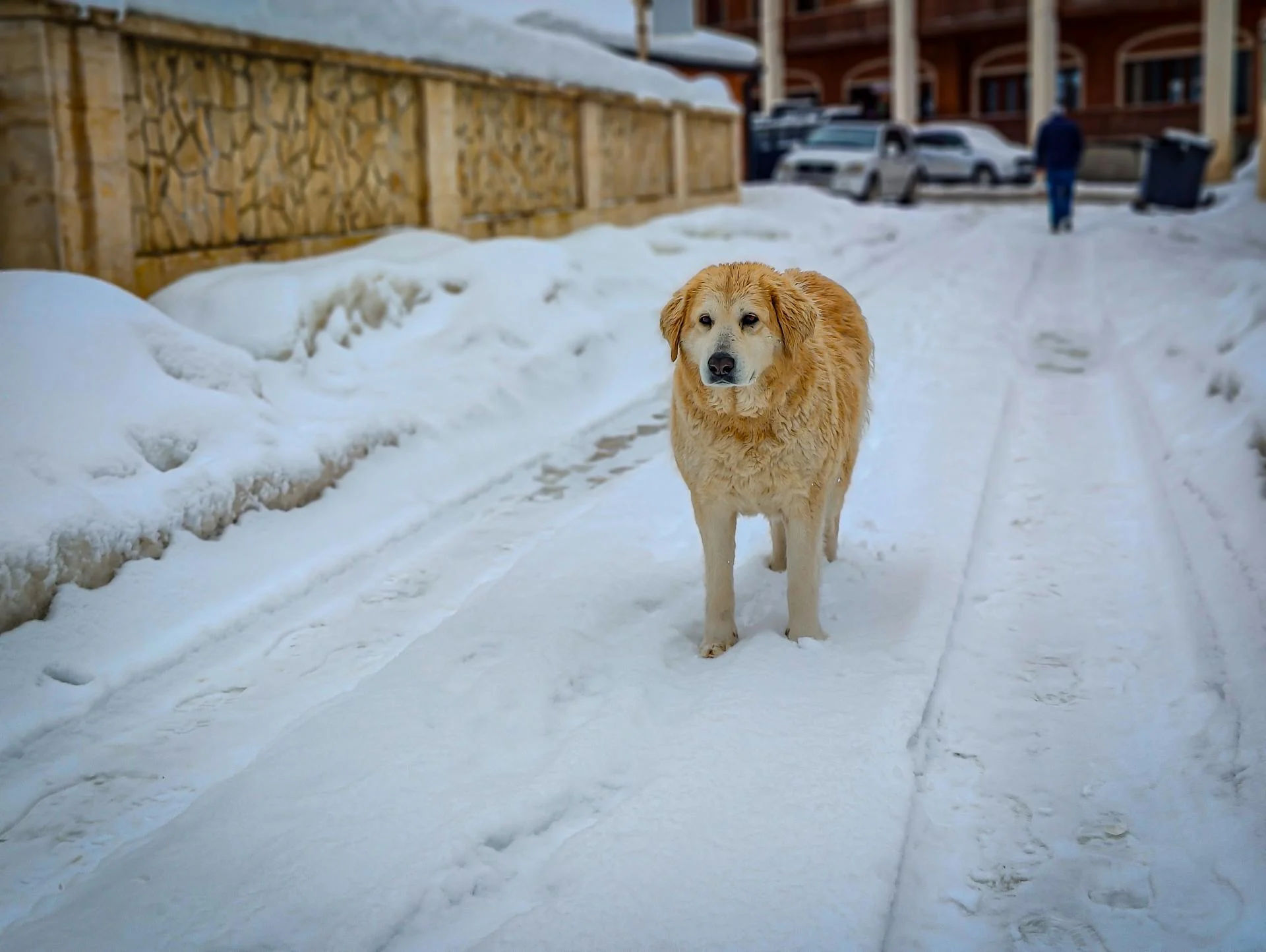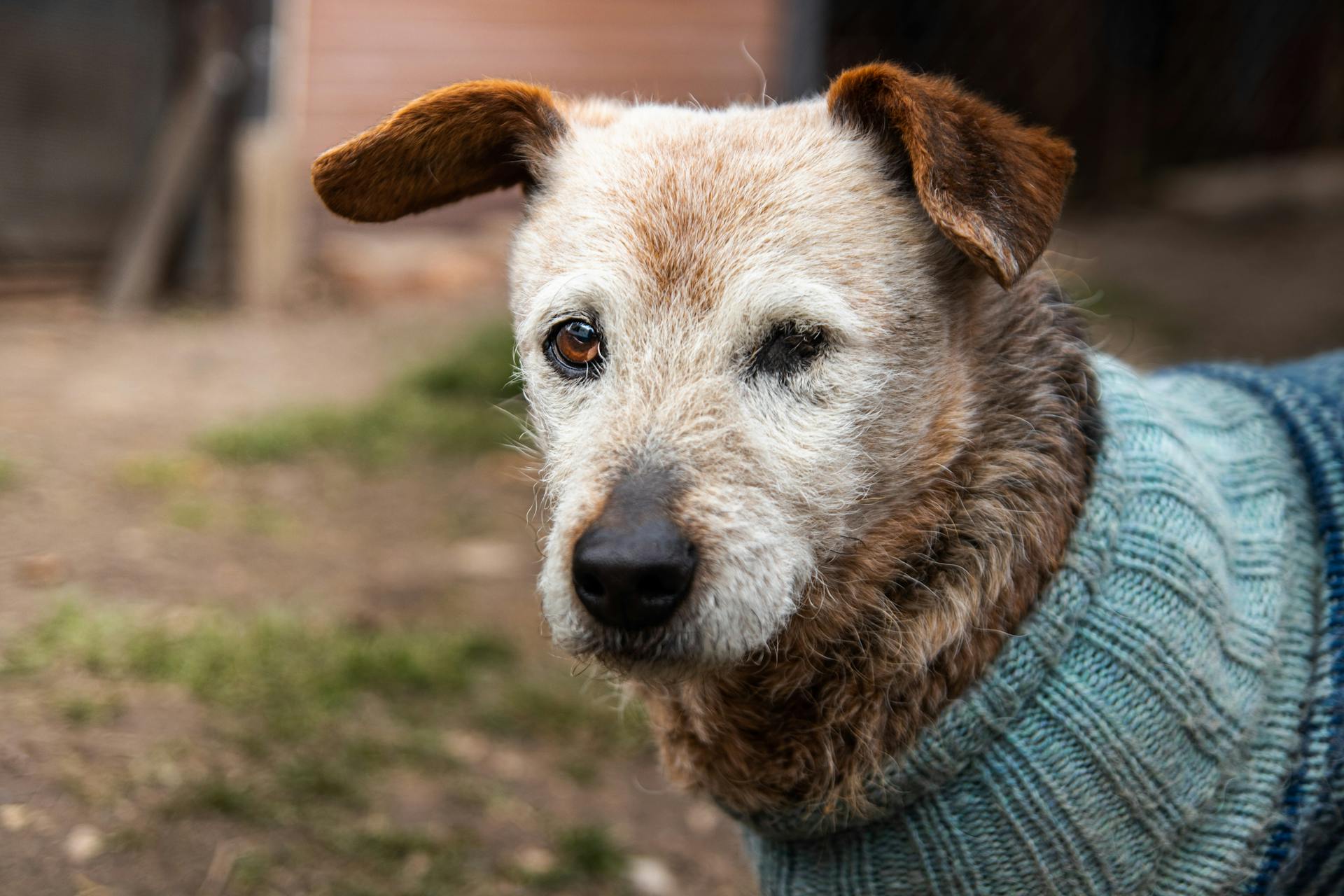
As a Great Pyrenees owner, understanding the age stages and physical development of your furry friend is crucial for their overall health and well-being. Puppies are born after a 60 to 64 day gestation period.
At birth, Great Pyrenees puppies weigh around 1-2 pounds and are blind, deaf, and helpless. Their eyes and ears will open around 14-16 days old.
Their first teeth, also known as deciduous teeth, start coming in around 3-4 weeks old and continue to erupt until they are about 6 months old. This is a normal process that can be a bit messy, but don't worry, it's a sign of healthy development!
Consider reading: Old Great Pyrenees
Weight Growth Chart
At 1 month old, your Great Pyrenees puppy will weigh between 5-10 pounds. This is the starting point for their growth journey.
As they grow, their weight will increase significantly. By 2 months, your puppy will weigh between 15-30 pounds for males and 10-25 pounds for females.
By 3 months, your puppy will weigh between 30-40 pounds for males and 25-35 pounds for females. This is a crucial time for their growth, and it's essential to monitor their weight closely.
Here's a more detailed weight growth chart for your Great Pyrenees puppy:
Keep in mind that these are just estimates, and your puppy's growth rate may vary. It's essential to discuss any concerns with your veterinarian.
Health and Nutrition
As your Great Pyrenees ages, it's essential to prioritize their health and nutrition to ensure they live a happy and fulfilling life.
Regular veterinary check-ups are crucial, especially since Great Pyrenees are prone to hip dysplasia, bone inflammation, and osteosarcoma.
Preventative veterinary care can help screen for diseases early on, which often improves your dog's prognosis.
Great Pyrenees do well on dog food designed for large breeds, so choose a high-quality food that meets AAFCO standards.
Consult with your veterinarian to determine the best diet for your pup based on their specific medical history and lifestyle.
A good dog food should be suitable for your dog's current life stage, whether that's puppy, adult, or senior.
Suggestion: Puppy Food for Great Pyrenees
Physical Characteristics

At six months old, a male Great Pyrenees will weigh approximately 70 to 80 pounds.
A six-month-old female Great Pyrenees will weigh less, between 50 to 60 pounds.
Both males and females have a significant amount of growing left to do before they reach their adult size.
Expand your knowledge: 4 Week Old Great Pyrenees Puppy
Puppy Growth
At 1 month old, your Great Pyrenees puppy will weigh between 5-10 pounds, regardless of sex.
Most puppies will need up to 24 months to reach their adult size, so if they are less than two years old, you can expect them to continue growing.
At 2 months old, your male Great Pyrenees puppy will weigh between 15-30 pounds, while your female will weigh between 10-25 pounds.
You can estimate where your puppy is at in the Great Pyrenees growth stage based on how old they are.
Here's a breakdown of your puppy's expected weight at different ages:
You can also consider your puppy's genetics, as most puppies do not grow to be larger than their biggest parent.
Frequently Asked Questions
How long do most Great Pyrenees live?
Most Great Pyrenees live between 10-12 years, with some living up to 14 years. Their lifespan can vary depending on several factors.
What is the oldest age of a Great Pyrenees?
The maximum recorded lifespan of a Great Pyrenees is 15 years, although 11-14 years is the average expected lifespan in a loving environment. With proper care, some Pyrs have been known to live into their mid-to-late teens.
Featured Images: pexels.com


